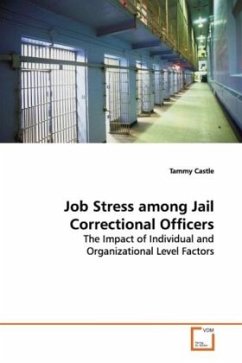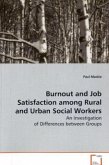In view of what is known about job stress
among prison correctional officers, and the
differences between jails and prisons, this study
sought to augment the literature on the interaction
between the jail correctional officer and the
environment. In particular, this study focused on
the impact of stressors on correctional officers
working in the jail setting. These stressors are
divided into three broad areas and include:
individual level factors (gender, perceptions of the
job as dangerous, role problems, correctional
experience, and education), organizational level
factors (administrative strengths, job conditions,
supervisory support, peer support, staffing,
overtime, shift work, and job satisfaction), and
jail features (inmate supervision style, jail unit,
training, and overcrowding). The data were collected
using a survey instrument that was sent to 25 jails,
which employ 2188 correctional officers. The data
were analyzed using multivariate quantitative
methods. The results of the analyses are presented,
and based on the findings, strategies for reducing
job stress among jail correctional officers
are suggested.
among prison correctional officers, and the
differences between jails and prisons, this study
sought to augment the literature on the interaction
between the jail correctional officer and the
environment. In particular, this study focused on
the impact of stressors on correctional officers
working in the jail setting. These stressors are
divided into three broad areas and include:
individual level factors (gender, perceptions of the
job as dangerous, role problems, correctional
experience, and education), organizational level
factors (administrative strengths, job conditions,
supervisory support, peer support, staffing,
overtime, shift work, and job satisfaction), and
jail features (inmate supervision style, jail unit,
training, and overcrowding). The data were collected
using a survey instrument that was sent to 25 jails,
which employ 2188 correctional officers. The data
were analyzed using multivariate quantitative
methods. The results of the analyses are presented,
and based on the findings, strategies for reducing
job stress among jail correctional officers
are suggested.








